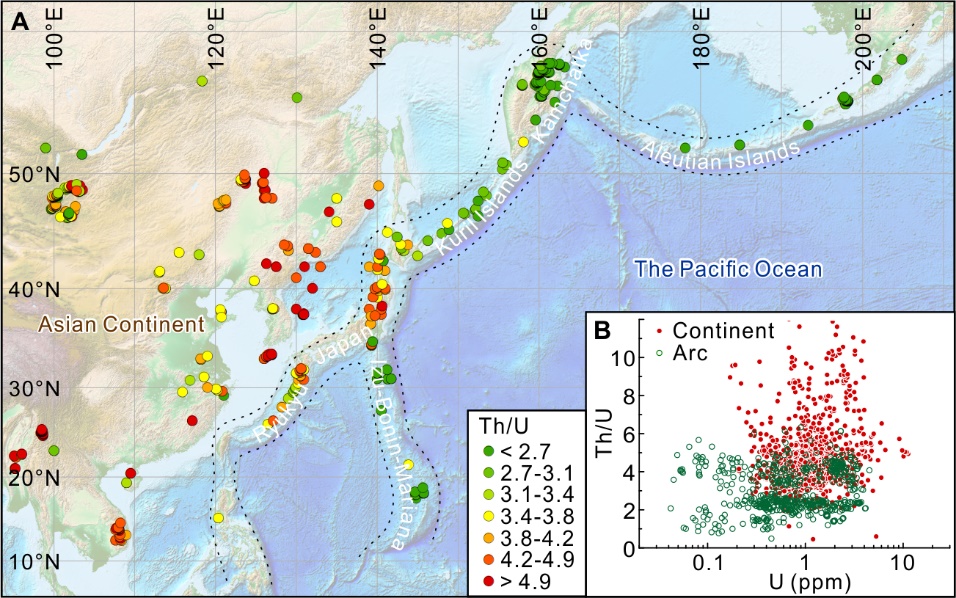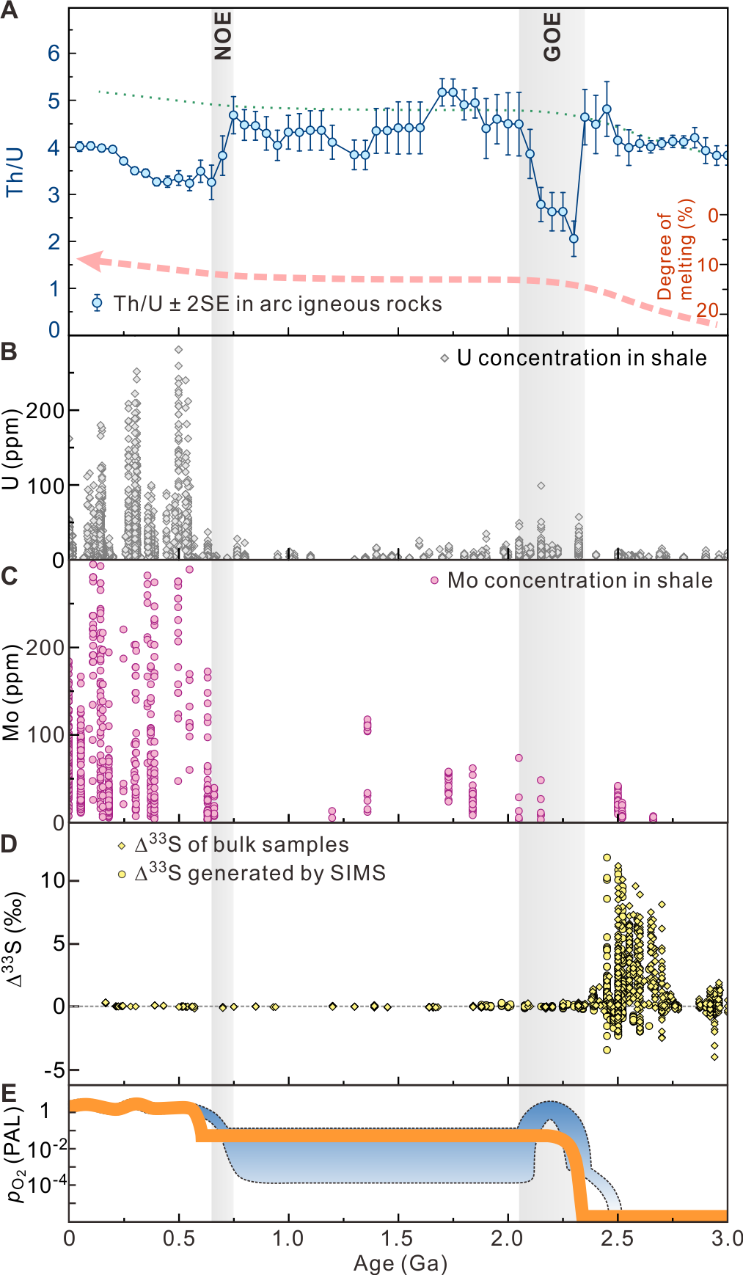In the early Earth, there is almost no oxygen (O2) in the atmosphere. The content of atmospheric oxygen has experienced two significant elevations and finally achieved the present level. Scientists have been working on the dating of atmospheric oxygenation events for decades. However, most previous studies focused on the geochemical characteristics of sedimentary rocks, because the composition of sedimentary rocks are more directly affected by the variations of atmosphere-ocean oxygen content. On the contrary, the influences of atmospheric oxygenation on the chemistry of deep-sourced igneous rocks require more complicated processes.
Professor Wei-dong Sun from Center of Deep-Sea Research, Institute of Oceanology, Chinese Academy of Sciences and his supervised postdoc, Dr. He Liu, cooperating with American and Australian scientists, define the time of atmospheric oxygenation from an innovative approach and perspective. As revealed in their study, the igneous rocks along the Alaska Peninsula, Aleutian Islands, Kamchatka Peninsula, Kuril Islands, and Izu-Bonin-Mariana Arc contain lower Th/U than the rocks from the Asian continent (Fig. 1). Th and U in their tetravalent states have very similar geochemical behaviors, so that they are not significantly fractionated relative to each other during magmatic processes. In an oxidizing atmospheric condition, the U4+ is oxidized into the water-soluble U6+, which stays in surface fluvial water and the seawater. In contrast, the water-insoluble Th4+ can only be transported with the river water and into the oceans as suspended particles. This accounts for the extremely low average Th/U of seawater, sediments, as well as the altered oceanic crust. Subduction transports the low Th/U signature eventually into the arc igneous rocks above the subducted oceanic plate.

Fig. 1 The Th/U of igneous rocks (younger than 10 Ma) in the East Asian continent and northern Pacific
However, because the atmosphere and seawater were free of oxygen in the Earth’s early history, neither the altered oceanic curst nor the arc igneous rocks would contain low Th/U feature during that time. In view of this speculation, Liu and his colleagues extract the intermediate-felsic arc rocks data spanning the last 3.0 Ga from a global igneous geochemistry database and perform a statistical analysis for the secular variation of Th/U in arc rocks. The result shows that the two dramatic decreases of Th/U in arc rocks are well coincident with the two global atmospheric oxygenation events (Fig. 2), occurring ca. 2.4 and 7.5 billion years (b.y.) ago, respectively.
The first oxygenation is widely termed Great Oxidation Event (GOE), which started in ca. 2.4 b.y. ago and terminated ca. 2.1 b.y. ago. The beginning and ending times of the GOE were previously defined by the variations of the sulphur and carbon isotope compositions. No effort has been made to determine the date of the GOE using igneous geochemistry. Furthermore, the Th/U records in arc rocks also demonstrate that the oxygen contents underwent a transient enhancement and a subsequent drop during the period between 2.4 and 2.1 b.y. ago.
The second rise of atmospheric oxygen is commonly referred as Neoproterozoic Oxygenation Event (NOE), occurring about 7.5 b.y. ago. After the NOE, the atmospheric oxygen level evolved at a relatively high range, which provides the essential condition for the flourish of Ediacaran biota and the Cambrian explosion. The abrupt decrease of average Th/U in arc rocks in 7.5 b.y. ago indicates the elevation of oxygen level in the atmosphere-ocean system. This is consistent with the latest timing results for the NOE from the Cr isotope, Mo and V concentrations in sedimentary rocks and the dates of sulfide evaporites.

Fig. 2 Secular variations of redox-sensitive geochemical indicators throughout
Earth’s history.
In comparison to sedimentary records, the igneous data have more reliable ages and a large quantity of samples, covering the global scale. The statistical study on igneous geochemistry provides more convincing evidence for the timing of oxygenation events. More importantly, the igneous Th/U indicator recorded both the GOE and NOE, in contrast to the previous studies focusing on respective evidence of the two events.
Liu and his colleagues make the first attempt to apply the chemical composition of worldwide arc igneous rocks as an indicator for the timing of atmospheric oxygenation over the Earth’s history. This opens a new field for similar studies.
This study was supported by Strategic Priority Research Program of the Chinese Academy of Sciences (CAS) Grant XDB18020102 and National Key R & D Program of China Grant 2016YFC0600408 (to W.D.S.).
Reference
Liu H., Zartman R. E., Ireland T. R., Sun W.-D. 2019. Global atmospheric oxygen variations recorded by Th/U systematics of igneous rocks. Proceedings of the National Academy of Sciences of the United States of America. DOI: 10.1073/pnas.1902833116.

